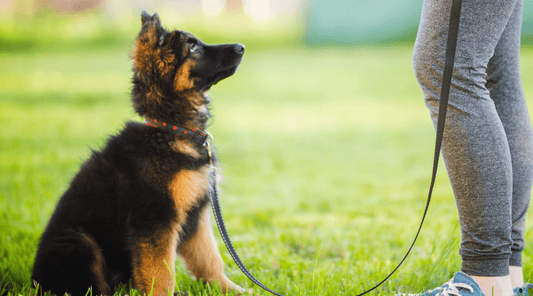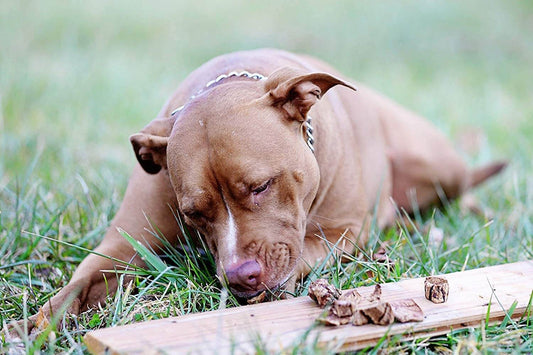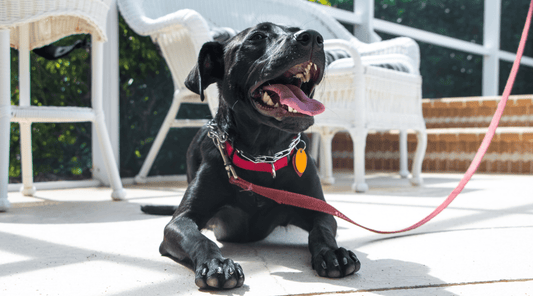
Dog Vet Visit: How to Reduce Vet Anxiety in Dogs
Dawn Miller Mar 26, 20255 Minute ReadDog scared at vet? Mine too. My lab mix Bruno loves car rides. He practically flies into the car, tail wagging, ears perked—until we pull into the vet’s parking lot. And his entire mood shifts. This is no longer the trip to the lake or trail he expected. It's torture.
Dogs have legitimate reasons for being scared of dog vet visits. For some, the car ride itself is scary because vet trips are the only time they ride. For others, it's feeling crated, touched and prodded. Are dogs afraid of needles, too?
Then you have the scents of other dogs and cats. I mean, I can smell the different animals as a human. I can't imagine the mix of smells a dog can sense. By the time we're inside, my Bruno might be shaking like a leaf.
But that was before.
I've found that with the right prep and positive reinforcement, you can train your dog for vet visits so they’re way less anxious—and maybe even excited to go.
Here's how I use high-value treats to create positive experiences.
Why Are Dogs Scared at Vet?
The vet is one of those places where a lot of dog icks really come together.
- Unfamiliar Environment - New smells, bright lights, slippery floors—it’s a sensory overload.
- Negative Experiences - If past visits involved needles, invasive parasite checks, or discomfort, they remember.
- Separation Anxiety - Some dogs panic when taken away from their owner for exams.
- Other Anxious Animals - A waiting room full of stressed-out pets = contagious tension.
- Your Own Anxiety - Let's face it: Some of us get nervous when going to the doctor or vet. Dogs look to you for guidance. They can feel this energy. You give it away in how you speak, look, act and even smell (stress hormones in your sweat).
But here's the good news. You can retrain their association—so the vet isn’t a place of doom but just another adventure.
How to Reduce Anxiety in Dogs Before a Dog Vet Visit
1. Take “Happy Trips” to the Vet
If the only time your dog visits the vet is for shots or scary procedures, of course, they’ll hate it. So, let's change that:
- Drop by just to say hello—have the staff give your dog treats.
- Let your dog sniff around the lobby without an appointment.
- Practice going inside, then leaving a few times in one visit—no needles, no stress.
- Before you do this, teach them dog commands to help you confidently manage them during visits.
Do this a few times, and suddenly, the vet’s office doesn’t seem so scary anymore.
But it's important to realize they already have some bad associations you're trying to re-write. Don't get discouraged if the first couple of times are fearful experiences. Stay positive and supportive. Keep the visits quick and in close succession (maybe a couple of days apart) so they remember.
2. Train Dog for Vet Visit
Handling is a critical part of dog socialization. Ideally, you do this when they're puppies. But grown dogs can benefit, too. Just be careful and slow about it.
Wash your hands. And then sit next to them somewhere comfortable, like on the sofa or the floor. Speak in a calm and cheerful voice. Next, gently:
- Inspect their mouth (with clean hands)
- Massage their gums
- Handle their ears (outside only)
- Touch and massage each paw
- Grip their nails as if you might cut them (but don't clip them right now)
Give them a treat after each step. Only reward calm behavior. No squirming = jackpot reward!
These sensations can seem threatening if a dog doesn't know what's going on. Wouldn't you have the same reaction? Why are you touching me like that? You're changing their perception of these "personal space violations" and making them feel pleasant because they get rewarded with dog treats and dog bones.
3. Teach "Go to Crate"
If you crate your dog for dog vet visits, and no other time, the crate becomes a terrifying place. Instead, build positive associations with the crate or carrier. Turn it into a "wolve's den" for your dog. My dog's ancestral wolves feel safe in their dens. They sleep there and hide in it during thunderstorms.
You can help them have this more friendly association with a crate or carrier through positive reward training.
4. Teach "Hop, Load Up, or Climb" Command
Choose one and be consistent. By allowing your dog to enter the vehicle at will, you're avoiding creating negative associations with cars. If your dog isn't able to jump into the backseat, consider getting a ramp.
Pro Tip: Ramp training a middle-aged pup can help them manage mobility issues later in life by teaching them to balance while they still have full control.
5. Take More Car Rides
If the only time you ever get in a vehicle is vet rides, of course, they're going to freak out. Find other opportunities to take a drive, even if you could walk there—dog park, park, trail, lake, or visit the in-laws if your dogs love them as much as you do.
How to Reduce Anxiety in Dogs
Many dogs seem extra anxious about everything. They bark at the littlest noise. They have accidents or destroy things when you're away.
These are often signs that a dog needs mental stimulation to support effective stress management. Yes, you can take steps to improve how your dog manages stress and anxiety. You can raise a cooler, calmer and more collected K9.
So, what's mentally stimulating to dogs?
-
Consistent routines — Dogs have internal clocks that are pretty spot on. Having walks, food, playtime, chewtime, cuddle time, etc., at the same times every day lets a dog anticipate what comes next, which eases anxiety.
-
Dog training — Teaching dogs commands with positive reinforcement training improves your communication with them. They experience less frustration because they know what to do and when to do it. You seem more predictable to each other.
-
Enhancing nutrition — If a dog is missing key nutrients, they may respond to relatively benign situations with more anxiety. Make sure your dog is getting plenty of B vitamins, iron, calcium, omega 3, omega 6, and protein to give
-
Socialization — Helping your dog explore different people, dogs, places, and experiences eases fear of the unknown.
-
Regular exercise — Dogs want to run and play. These activities are not only natural but also mentally and physically stimulating, improve health, and help dogs better manage stress.
-
Dog bone chew sessions — Dogs instinctually chew on things to clean their teeth, entertain themselves, and manage stress. So, having a chew bone session on the calendar every 2-3 days is how to reduce anxiety in dogs. Not only does chewing on meaty marrow-filled dog bone ease stress at the moment. It can stop destructive chewing and disruptive behaviors that can lead to a less-than-harmonious life for your dog and the people in the home.
Want to make vet visits (and other stressful situations) easier? Join our 7-Day Dog Training Challenge to learn how to train for calm behavior, reinforce positive associations, and use rewards effectively.
Available On:


Disclosure: This article may contain affiliate links, which means we may earn a small commission if you make a purchase through these links—at no extra cost to you. We only recommend products we trust and believe will benefit you and your K9.



